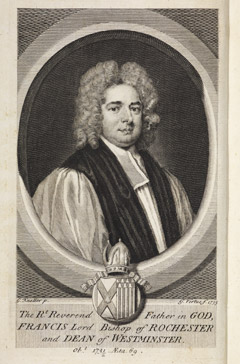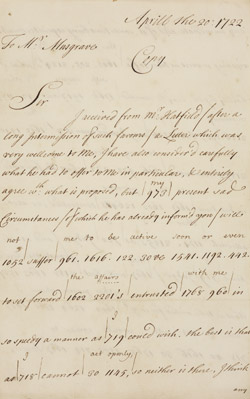The Atterbury Plot

The Jacobite conspirator Francis Atterbury, Bishop of Rochester. Engraving by George Vertue after the painting by Godfrey Kneller, 1735. Yorke.d.12.
The Atterbury Plot was the most significant attempt to restore the Stuart monarchy in Britain between the Jacobite rebellions of 1715 and 1745. Centred upon Francis Atterbury (1663–1732), Bishop of Rochester, the plot aimed at the overthrow of the Hanoverian King George I and his replacement by the ‘Old Pretender’, styled James III. Various prominent men were involved in the scheme in addition to Atterbury himself, including Lord North and Grey, the Earl of Orrery, and Sir Henry Goring. Among the most active Jacobite agents in the conspiracy were John Plunket, George Kelly and Christopher Layer.
The documents in this case were drawn up or adduced as evidence in the course of the plot’s collapse. They come from the personal archive of Sir Robert Walpole, the British Prime Minister of the day, and are the original papers used by the parliamentary committee set up to investigate the plot in 1723.
The unravelling of the Atterbury Plot had consequences of varying degrees of severity for the conspirators. Francis Atterbury was deprived of his bishopric and other preferments, and permanently exiled; he served for some time as James’s Secretary of State, but died an embittered man. John Plunket spent the rest of his life as a prisoner in the Tower of London; George Kelly was imprisoned there for fourteen years before escaping to France; and Christopher Layer, who refused to implicate his accomplices, was hanged, drawn and quartered at Tyburn on 17 May 1723.

Copy of a letter written in cipher during the Atterbury Plot, 1722. MS Ch(H) 69/4/11.
